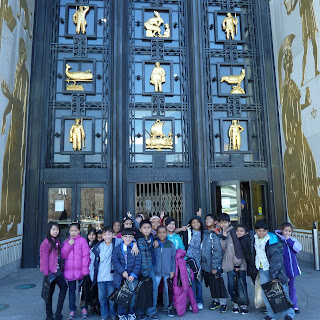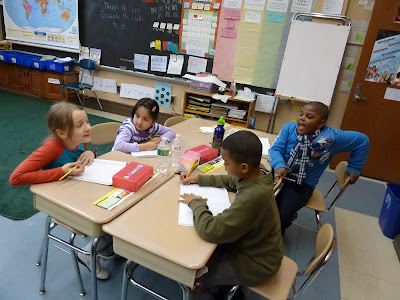Cassandra Dawn
cassandragracedawn@gmail.com
CERTIFICATION
New York State: Childhood 1-6 (professional), tenured (2010)
ESL (professional)
CAREER EXPERIENCE
P.S. 217, Colonel David Marcus School
Brooklyn, NY 2004-2006; 2010-presentTeacher, 3rd Grade
• Curriculum Leader-creating curriculum maps and locating materials to support NY state and Common Core Standard Curriculum
• Serving as a Mentor/Master teacher
• Increasing student reading levels up to 15 levels (F & P) in a single year, 5.5 on average
• Achieving 80% scores of 3 or 4 on the 2011 NYS 3rd Grade Math Test for a diverse student population (ESL beginners and intermediates, IEP & general education students)
• Increasing English proficiency one or more levels on the NYSESLAT by 92%
• Serving on the School Leadership Team
• Organizing ESL after-school intervention program: teachers, materials, pacing and assessment
• Organizing the Running Club, assisting with school theater productions such as Robin Hood, volunteering for school fairs, fundraisers, and in the PS 217 Garden to Table program
Cheremoya Elementary
Los Angeles, CA 2002-2004
Teacher, 1st Grade
• Developing and implementing a California State Standard first grade curriculum by providing project based instruction in literacy, math, science, and the arts
Pratt Institute
Brooklyn, NY 2007-2010
Adjunct Professor, Writing, Thesis
• Developing and implementing a theme-based, interdisciplinary, multi-media approach to English literature
• Utilizing technology in classroom instruction including Smart Board instruction
• Providing an understanding of and ability to produce basic academic writing forms such as the research paper, compare/contrast essays, and descriptive narratives
Columbia University
New York, NY Summer 2008
Adjunct Professor, English Literature
• Developing and implementing a theme-based, multi-media curriculum for students of English Literature
EDUCATION
Columbia University, Teacher’s College, New York, NYM.A. Applied Linguistics, 3.92, 2008
Apple Award Finalist for Thesis “Be like et all: How the valley girls are taking over”
California State University, Northridge, California
Teaching Credential, 3.91, 2004
Teaching Credential, 3.91, 2004
California certification in Childhood Education 1-6 and ESL
University of Oregon, Robert D. Clark Honors College, Eugene, OR
B.A. English, 3.8, 2001
Awards: University Award, Susan Schnitzer Award, Hunter Family Scholarship
Responsibilities: President, National Organization of Women Chapter; Philanthrophy Chair, Alpha Chi Omega; Women’s Representative, Associated Students of the University of Oregon; Election Chair, Associated Students of the University of Oregon
Oregon Episcopal School, Portland, OR — High School Diploma, 1996
METHODS/PROGRAMS (Elementary)
Literacy: Balanced Literacy Workshop model: read aloud, shared reading, guided reading, and independent reading; CAFÉ; Comprehension Toolkit; Making Meaning; Reading Street; Imagine Learning; Lucy Caulkins’ Writer’s Workshop
ESL: AWARD Reading; On Our Way to English; Mondo; Rigby; English Explorers
Phonics: Words Their Way; Wilson
Math: Math Workshop; Math Connects; Everyday Math
Test Prep: Testing Fundamentals; Ready NY CCSS; Kaplan Test Prep; Rally; Finish Line; Terranova



















































